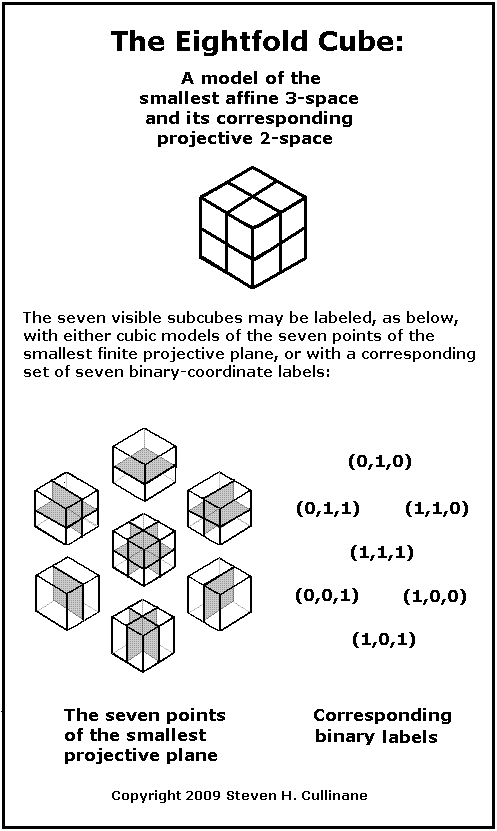Hans Freudenthal in 1962 on the axiomatic approach to geometry
of Fano and Hilbert —
"The bond with reality is cut."

Some philosophical background —

For Weyl's "few isolated relational concepts," see (for instance)
Projective Geometries over Finite Fields , by
J. W. P. Hirschfeld (first published by Oxford University Press in 1979).
Weyl in 1932 —
|
Mathematics is the science of the infinite , its goal the symbolic comprehension of the infinite with human, that is finite, means. It is the great achievement of the Greeks to have made the contrast between the finite and the infinite fruitful for the cognition of reality. The intuitive feeling for, the quiet unquestioning acceptance of the infinite, is peculiar to the Orient; but it remains merely an abstract consciousness, which is indifferent to the concrete manifold of reality and leaves it unformed, unpenetrated. Coming from the Orient, the religious intuition of the infinite, the apeiron , takes hold of the Greek soul in the Dionysiac-Orphic epoch which precedes the Persian wars. Also in this respect the Persian wars mark the separation of the Occident from the Orient. This tension between the finite and the infinite and its conciliation now become the driving motive of Greek investigation; but every synthesis, when it has hardly been accomplished, causes the old contrast to break through anew and in a deepened sense. In this way it determines the history of theoretical cognition to our day. — "The Open World: Three Lectures on the Metaphysical Implications of Science," 1932 |














